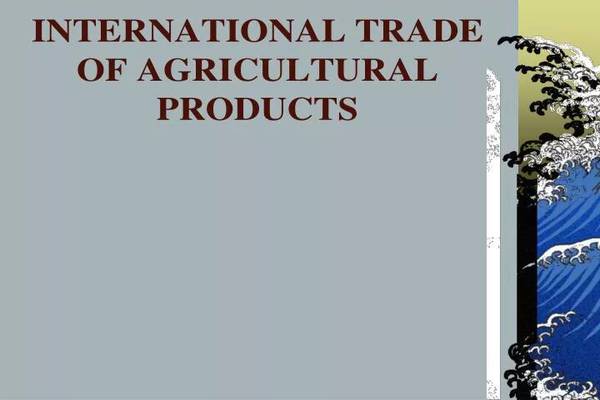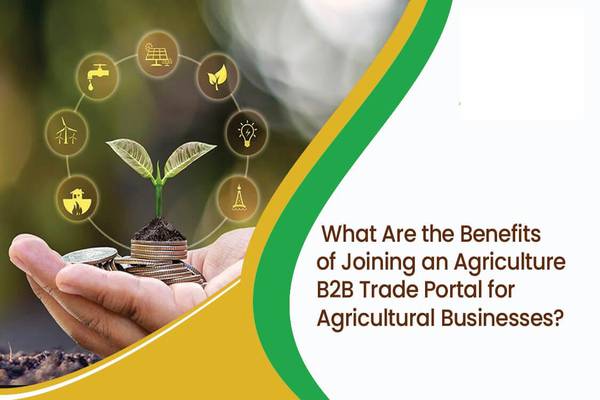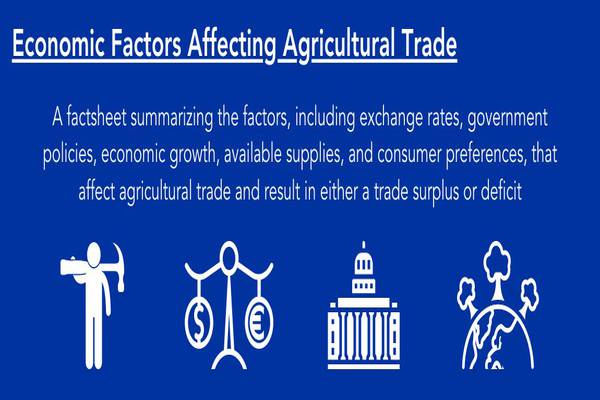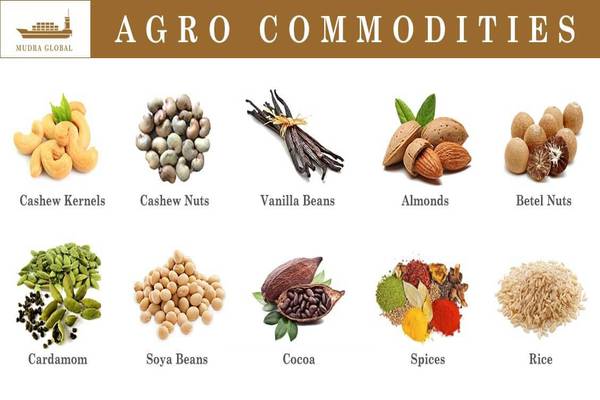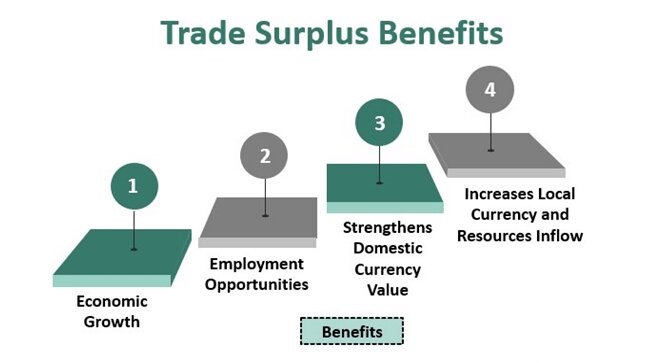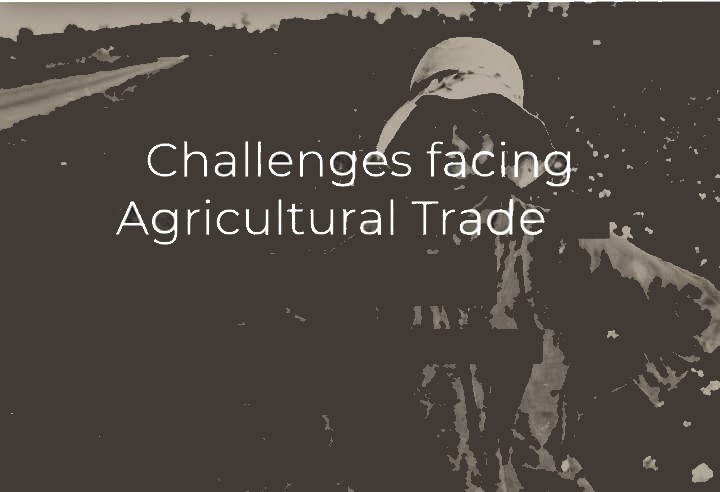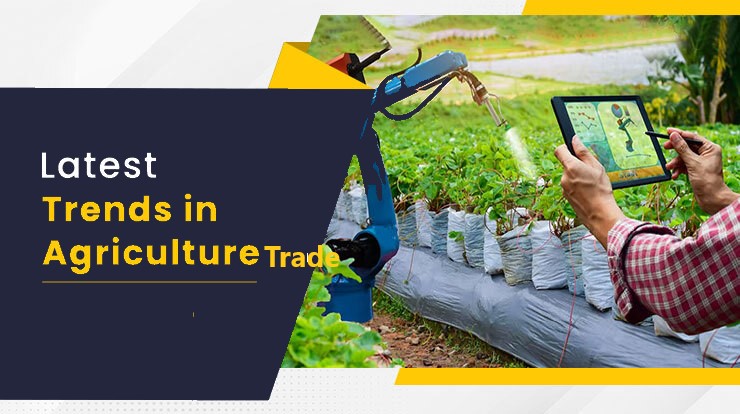Understanding Agricultural Trade
Drafted by: vijaychourey26@gmail.com
In a world of interconnected economies, agricultural trade plays a pivotal role in shaping global markets, ensuring food security, and driving economic growth. This article delves into the intricate web of agricultural trade, exploring its significance, challenges, and the mechanisms that govern it.
The Importance Of Agricultural Trade
Agricultural trade serves as the backbone of global food supply chains, enabling countries to exchange surplus produce, diversify diets, and enhance food security. It's not merely the exchange of goods but an intricate dance of policies, economics, and environmental considerations that determine the flow of agricultural products across borders.
Historical Evolution of Agricultural Trade
Throughout history, civilizations have engaged in agricultural trade to fulfill resource gaps and foster economic growth. From the Silk Road connecting East and West to the colonial-era spice trade, agriculture has been a driving force behind exploration, colonization, and the rise of empires.
Key Players in Agricultural Trade
Modern agricultural trade involves a multitude of stakeholders, including farmers, agribusinesses, governments, and international organizations. These players collectively influence trade policies, market dynamics, and the allocation of resources.
Benefits Of Agricultural Trade
Enhancing Food Security
Agricultural trade contributes significantly to food security by allowing countries to access a diverse array of products. In times of local scarcity, nations can rely on imports to meet their nutritional needs, preventing potential famines and ensuring a stable food supply.
Economic Growth and Revenue Generation
The export of agricultural products can become a major source of revenue for many countries. By tapping into international markets, farmers can expand their customer base, resulting in increased income and improved living standards. Additionally, agricultural trade contributes to a nation's GDP growth and can lead to the development of related industries such as transportation and packaging.
Diversification of Agricultural Production
Engaging in agricultural trade encourages nations to diversify their agricultural output. This diversification is vital because it reduces dependency on a single crop and minimizes the impact of crop failures due to pests, diseases, or adverse weather conditions.
Technological Advancement
Agricultural trade often involves the transfer of technology and expertise between nations. Advanced agricultural practices, machinery, and irrigation methods can be shared, leading to increased productivity and sustainability within the industry.
Poverty Alleviation
In many developing countries, agriculture remains a primary source of employment. By participating in agricultural trade, these nations can create income opportunities for their rural populations, thus reducing poverty levels and improving livelihoods.
Environmental Sustainability
Global agricultural trade can promote sustainability by encouraging the adoption of eco-friendly practices. With consumers demanding more environmentally responsible products, nations are pushed to implement greener farming methods, reducing the industry's overall carbon footprint.
Access to Varied Goods
Agricultural trade provides consumers with access to a wide range of goods that may not be locally produced. This exposure to diverse products enhances culinary experiences and nutritional choices.
Strengthening International Relations
Engaging in agricultural trade fosters diplomatic ties between countries. Collaborative efforts to ensure a smooth flow of goods across borders can lead to stronger political relationships and peaceful coexistence.
Factors Influencing Agricultural Trade
Climate and Geography
Climate and geography significantly impact the types of crops that can be cultivated in a region. This, in turn, dictates a nation's comparative advantage in certain agricultural products, driving trade opportunities.
Technological Advancements
Innovations in farming techniques, machinery, and storage have revolutionized agriculture. Advanced technologies enable countries to increase productivity, improve product quality, and compete effectively in the global market.
Trade Policies and Agreements
Trade policies, tariffs, and agreements shape the terms of agricultural trade between nations. Bilateral and multilateral agreements facilitate smoother trade, while protectionist measures can hinder market access.
Types Of Agricultural Products Traded Internationally
Commodities vs. Value-Added Products
Agricultural trade encompasses both raw commodities like wheat, rice, and coffee, as well as value-added products like processed foods and beverages. Value addition enhances profit margins and promotes economic growth.
Major Exporting and Importing Countries
Certain nations specialize in exporting specific agricultural products due to their favorable conditions. Conversely, importing countries often rely on these specialized exporters to meet their food demands.
Trade Balance: Surpluses And Deficits
The balance between a country's agricultural exports and imports affects its trade balance. Surpluses can lead to economic growth, while deficits may indicate reliance on foreign produce.
Impact of Agricultural Trade on Local Economies:
Employment
Agricultural trade supports employment along the entire value chain, from farming and transportation to processing and distribution. Job opportunities contribute to rural development.
Income Generation
For many developing nations, agricultural exports are a vital source of income. These earnings can be used to invest in infrastructure, education, and healthcare.
Sustainability and Environmental Considerations:
While agricultural trade is essential, its environmental impact cannot be ignored. Practices such as deforestation and excessive pesticide use can harm ecosystems and compromise long-term sustainability.
Challenges Faced By Agricultural Trade
Market Access and Tariffs
Barriers to market access, including high tariffs and non-tariff barriers, can impede agricultural trade. Negotiating favorable trade agreements is crucial for equitable access.
Sanitary and Phytosanitary Standards
Strict food safety and quality standards can create challenges for exporters. Harmonizing these standards can ensure safer trade practices.
Price Fluctuations
Volatility in commodity prices can disrupt agricultural trade and affect the livelihoods of farmers. Hedging mechanisms and risk management strategies are essential for stability.
Trade Facilitation And Organizations
World Trade Organization (WTO)
The WTO oversees global trade rules and resolves trade disputes. Its agreements provide a framework for fair agricultural trade practices.
Regional Trade Blocs
Regional agreements, like the European Union and ASEAN, promote trade among member countries. These blocs aim to reduce trade barriers and stimulate economic growth.
The Role of Technology in Agricultural Trade:
E-commerce and Online Marketplaces
Digital platforms connect buyers and sellers, transcending geographical boundaries. E-commerce enhances market access for small-scale producers.
Supply Chain Innovations
Blockchain technology and supply chain innovations improve traceability and transparency. Consumers are increasingly concerned about the origin and quality of their food.
Future Trends In Agricultural Trade
Digitalization and Data Analytics
Big data and analytics enable informed decision-making in agriculture. Precision farming and predictive analytics optimize resource allocation.
Climate-Smart Agriculture
With climate change posing challenges, adopting climate-smart practices becomes crucial. Resilient farming techniques and drought-resistant crops ensure food security.

